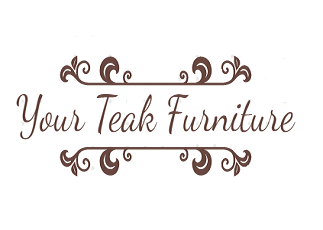In the evolving landscape of home heating solutions in Australia, Underfloor Heating is emerging as a game-changer, especially in cities like Melbourne. This method of heating, particularly under tile heating, is revolutionising bathroom comfort by offering a discreet yet effective way to warm these spaces. It’s not just about the luxury of stepping onto warm tiles but also about embracing an efficient, space-saving heating solution that aligns with modern Australian lifestyles.
Types of Underfloor Heating Systems for Bathrooms
In the Australian market, there are primarily two types of underfloor heating systems to consider: electric and hydronic. Electric Underfloor Heating Systems are increasingly popular in bathroom renovations due to their ease of installation under tiles. These systems use electrical cables or mats that emit heat when powered. On the other hand, hydronic systems circulate warm water through pipes under the floor. While more complex and typically used in larger scale or new constructions, they integrate seamlessly with a home’s central heating and are efficient in maintaining a consistent temperature.
The installation process of underfloor heating in the bathroom
In Australia, installing an underfloor heating system is a task best left to professionals. For under-tile heating, the process involves laying electrical mats or cables beneath the bathroom tiles, which are then connected to the electrical system and controlled via a thermostat. This installation requires careful planning to ensure even heat distribution and to avoid damage to the structural integrity of the floor. It is crucial to engage with certified technicians who understand the nuances of local Melbourne housing structures and electrical regulations.
Common Misconceptions about Underfloor Heating
Many Australians have misconceptions about underfloor heating, such as being too expensive or difficult to maintain. However, these systems are cost-effective in the long run due to their energy efficiency. Another common myth is that underfloor heating is slow to heat up; in reality, modern systems warm up quickly, providing immediate comfort. While it requires professional installation, the process is usually straightforward and can be easily incorporated into a bathroom renovation or new build.
Calculate the cost of running the heating.
Type of Underfloor Heating System: Electric systems typically have different running costs compared to hydronic systems.
Size of the Area: The larger the area, the more it will cost to heat.
Temperature Setting and Usage Time: Higher temperature settings and longer usage times will increase costs.
Electricity or Gas Prices: The cost per unit of electricity or gas (depending on your heating system) in your area.
Insulation: Well-insulated rooms retain heat better and can reduce running costs.
System Efficiency: Some systems are more efficient than others, affecting overall running costs.
Advantages of Underfloor Heating in the Bathroom
The benefits of underfloor heating, especially in a city like Melbourne with its variable climate, are manifold. It provides consistent and comfortable heat, eliminating the discomfort of cold tiles, and reduces the circulation of dust, making it ideal for those with allergies. Its space-saving nature is particularly appealing in urban homes where space is at a premium. Additionally, this form of heating adds a touch of understated luxury to any home, potentially increasing its market value.
Maintenance and Care Protocols
Maintenance for underfloor heating systems is minimal but crucial. Regular checks and annual servicing by a qualified technician can prevent potential issues. This includes inspecting the thermostat and electrical components for electric systems and checking for leaks or pressure issues in hydronic systems.
Cost Analysis for Melbourne Market
The cost of installing underfloor heating varies. Electric systems are typically more cost-effective for smaller areas or renovations, while hydronic systems are better suited for new constructions or major refurbishments. Despite the initial investment, the energy efficiency and the added property value make it a worthwhile long-term investment.
Conclusion
In conclusion, underfloor heating, incorporating under tile and bathroom wall heating systems, represents an efficient, comfortable, and modern solution for Bathroom Heating in Melbourne homes.
FAQs:
How Energy Efficient is Underfloor Heating?
Underfloor heating is highly energy-efficient, as it distributes heat evenly across the surface, reducing the need for higher temperatures to achieve comfort.
Can Underfloor Heating Be Installed in Older Homes?
Yes, modern underfloor heating systems can be retrofitted into existing homes with minimal structural changes.
How Long Does Underfloor Heating Last?
Underfloor heating systems can last for decades with proper installation and maintenance, often outlasting traditional heating systems.
Is Underfloor Heating Safe?
Yes, when installed and maintained correctly, underfloor heating is extremely safe and reliable.
Does Underfloor Heating Add Value to My Home?
Yes, underfloor heating can increase the value of your property by enhancing its comfort and appeal.
How Long Does It Take to Install Underfloor Heating?
The installation time varies depending on the system and the size of the bathroom but typically ranges from one to three days.
Can I Control the Temperature of the Underfloor Heating?
Yes, underfloor heating systems are controlled by Thermostats, allowing you to adjust the temperature to your comfort.
What Flooring Options Work Best with Underfloor Heating?
Tile and stone are ideal due to their good thermal conductivity, but options like engineered wood and some laminates can also be used.
Is Underfloor Heating Suitable for All Rooms?
While ideal for bathrooms, underfloor heating can be used in any room, offering a comfortable and efficient heating solution.

